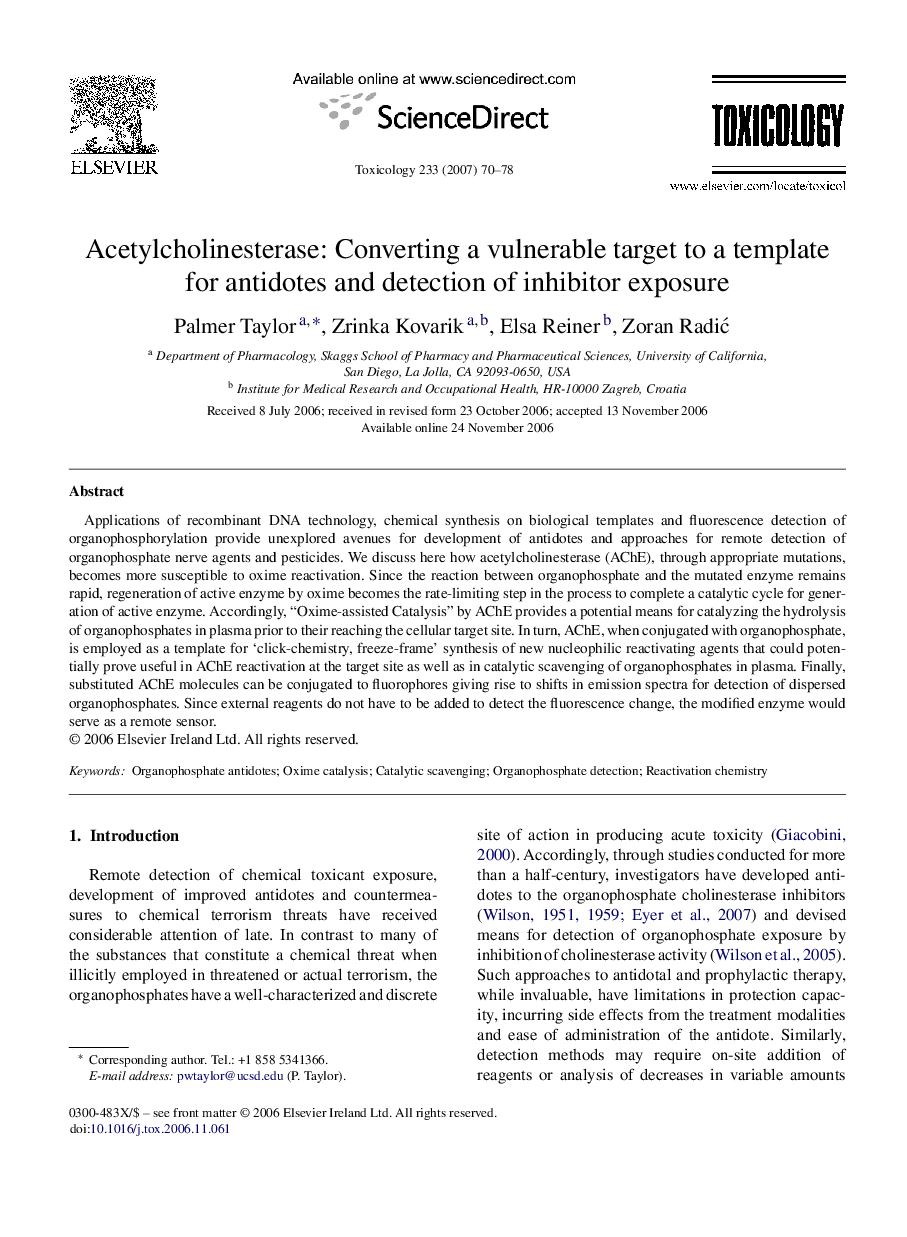| کد مقاله | کد نشریه | سال انتشار | مقاله انگلیسی | نسخه تمام متن |
|---|---|---|---|---|
| 2597866 | 1562423 | 2007 | 9 صفحه PDF | دانلود رایگان |

Applications of recombinant DNA technology, chemical synthesis on biological templates and fluorescence detection of organophosphorylation provide unexplored avenues for development of antidotes and approaches for remote detection of organophosphate nerve agents and pesticides. We discuss here how acetylcholinesterase (AChE), through appropriate mutations, becomes more susceptible to oxime reactivation. Since the reaction between organophosphate and the mutated enzyme remains rapid, regeneration of active enzyme by oxime becomes the rate-limiting step in the process to complete a catalytic cycle for generation of active enzyme. Accordingly, “Oxime-assisted Catalysis” by AChE provides a potential means for catalyzing the hydrolysis of organophosphates in plasma prior to their reaching the cellular target site. In turn, AChE, when conjugated with organophosphate, is employed as a template for ‘click-chemistry, freeze-frame’ synthesis of new nucleophilic reactivating agents that could potentially prove useful in AChE reactivation at the target site as well as in catalytic scavenging of organophosphates in plasma. Finally, substituted AChE molecules can be conjugated to fluorophores giving rise to shifts in emission spectra for detection of dispersed organophosphates. Since external reagents do not have to be added to detect the fluorescence change, the modified enzyme would serve as a remote sensor.
Journal: Toxicology - Volume 233, Issues 1–3, 20 April 2007, Pages 70–78